Redesigned the onboarding flow to reduce early churn, boost premium trial starts and increase first-session completion—by aligning UX with user psychology and product goals.
Start scrolling for the story. Or jump to the solution here.
Sole Product Designer
Figma, Miro, Mixpanel
1 Product Designer + Software Development Team
Oct 2024 – Jan 2025 (14 weeks)
The app, designed for beginner and intermediate freedivers, had a basic onboarding process consisting of four monotonous questions. While functional, it lacked engagement and failed to highlight the app’s core value early in the user journey.
The goal was to personalize the experience based on user goals and to redesign the onboarding to create a more polished, professional first impression—one that immediately conveyed value and ultimately increased user activation and conversions.
To create a more dynamic and psychologically engaging onboarding experience, I applied key UX principles and onboarding best practices:
Instead of overwhelming users with too much information at once, the onboarding reveals relevant details progressively, ensuring each step is easy to digest.
The process starts with goal-setting, which personalizes the experience early on and sets user expectations.
Social Proof.
Reinforcement screen with user testimonials and ratings reassures credibility and impact.
Achievement Framing.
The onboarding highlights potential performance improvements, leveraging users’ intrinsic motivation.
Dynamic Selection UI.
Static multiple-choice questions were redesigned into interactive selections with visual feedback.
Accessibility.
The UI maintains high readability and usability across devices.
Redesigning an onboarding experience isn’t just about better visuals—it’s about reducing friction and guiding users toward their ‘Aha! Moment’ before they drop off. To increase activation and trial starts, I followed a structured process grounded in competitor research, behavioral psychology, and rapid design iteration.
Before making any changes, I analysed onboarding flows from dozens of apps, both within and outside the breathing and wellness industry. The goal was to identify common patterns, best practices, and potential pitfalls that could inform my decisions.
Based on these findings, I created some low definition wireframes to show to the client. This proposal includes an improved goal-based question, testimonial reinforcement screens, and more dynamic question formats to encourage completion.
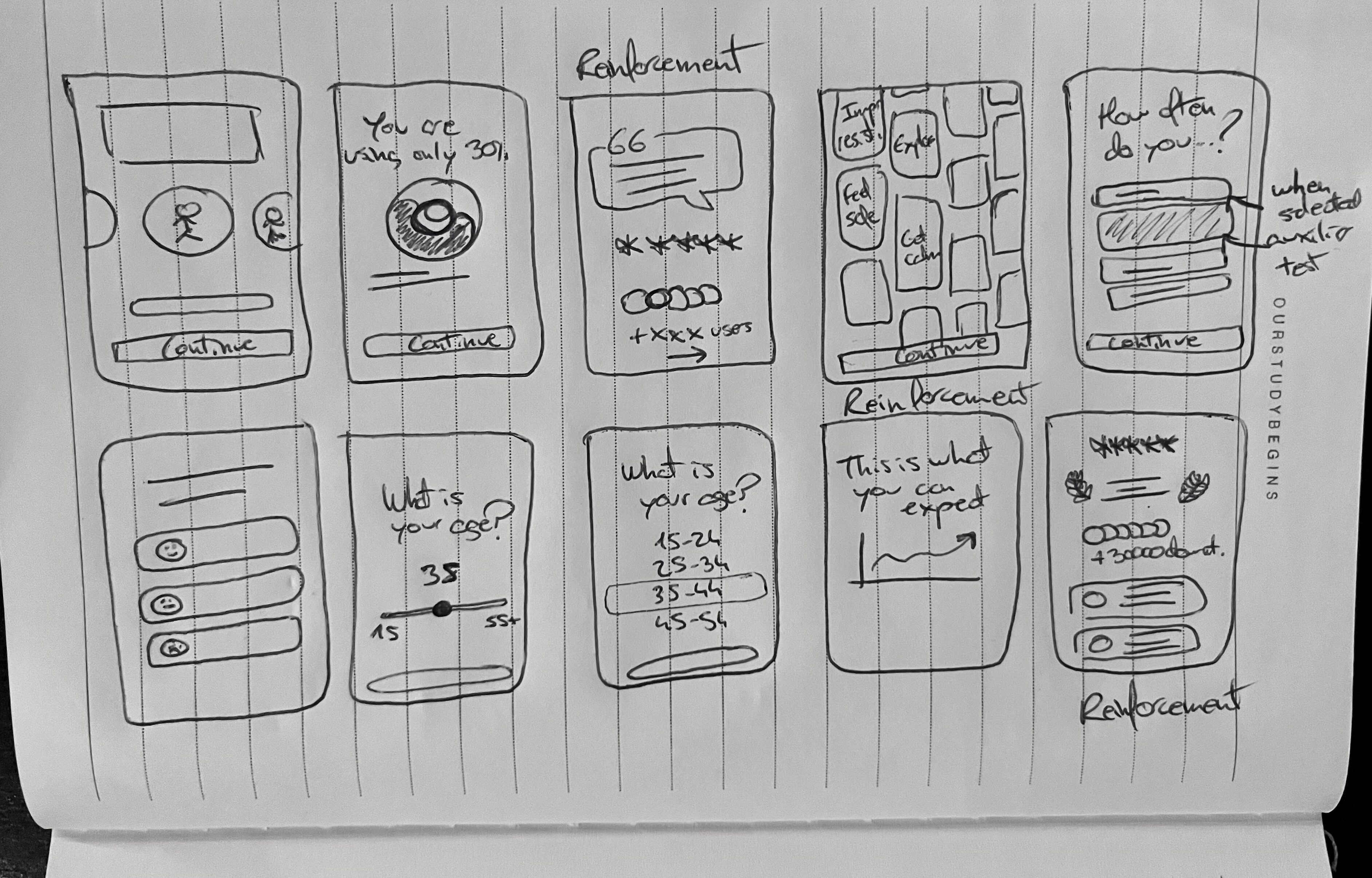
To better understand the user, I interviewed the client and analyzed behavioral data from Mixpanel and Amplitude. I identified that users had diverse goals and interacted with the app in different ways. Based on these insights, I created flowcharts to map out each user journey during onboarding—ensuring that every type of user could perceive value from the very first interaction.
Onboarding is as much about persuasion as it is about usability. I incorporated psychological principles such as:
Loss Aversion. For this task, I analysed and reviewed studies on the importance of freediving on health, sports performance and other aspects of life.
Commitment Bias. The journey starts with small, meaningful choices—selecting a goal, setting a personal challenge—making users feel more invested in their progress from the very first interaction.
Social Proof. Seeing real people improve their breath-holding ability and overall performance through the app reassures new users that they, too, can achieve remarkable results.

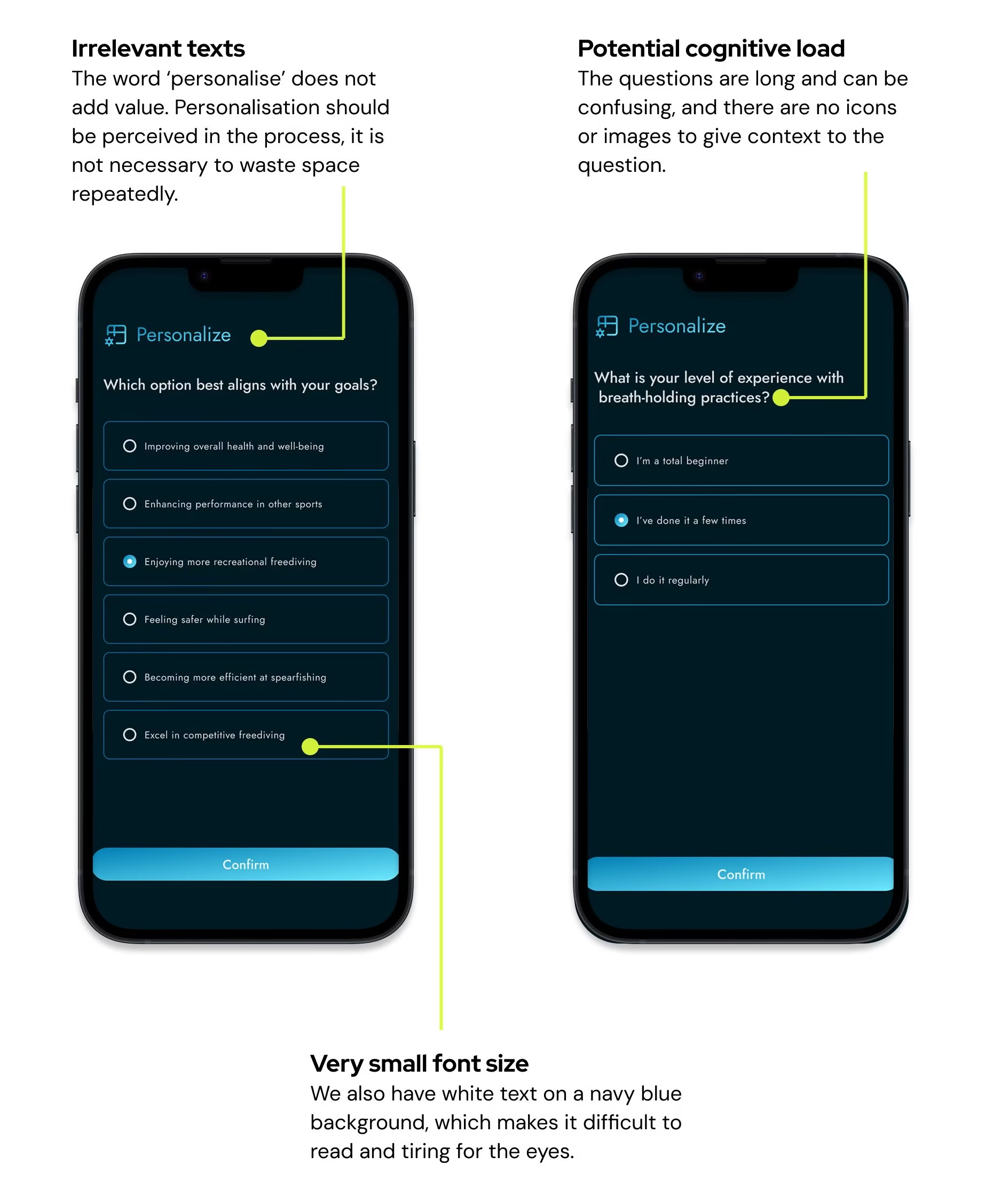
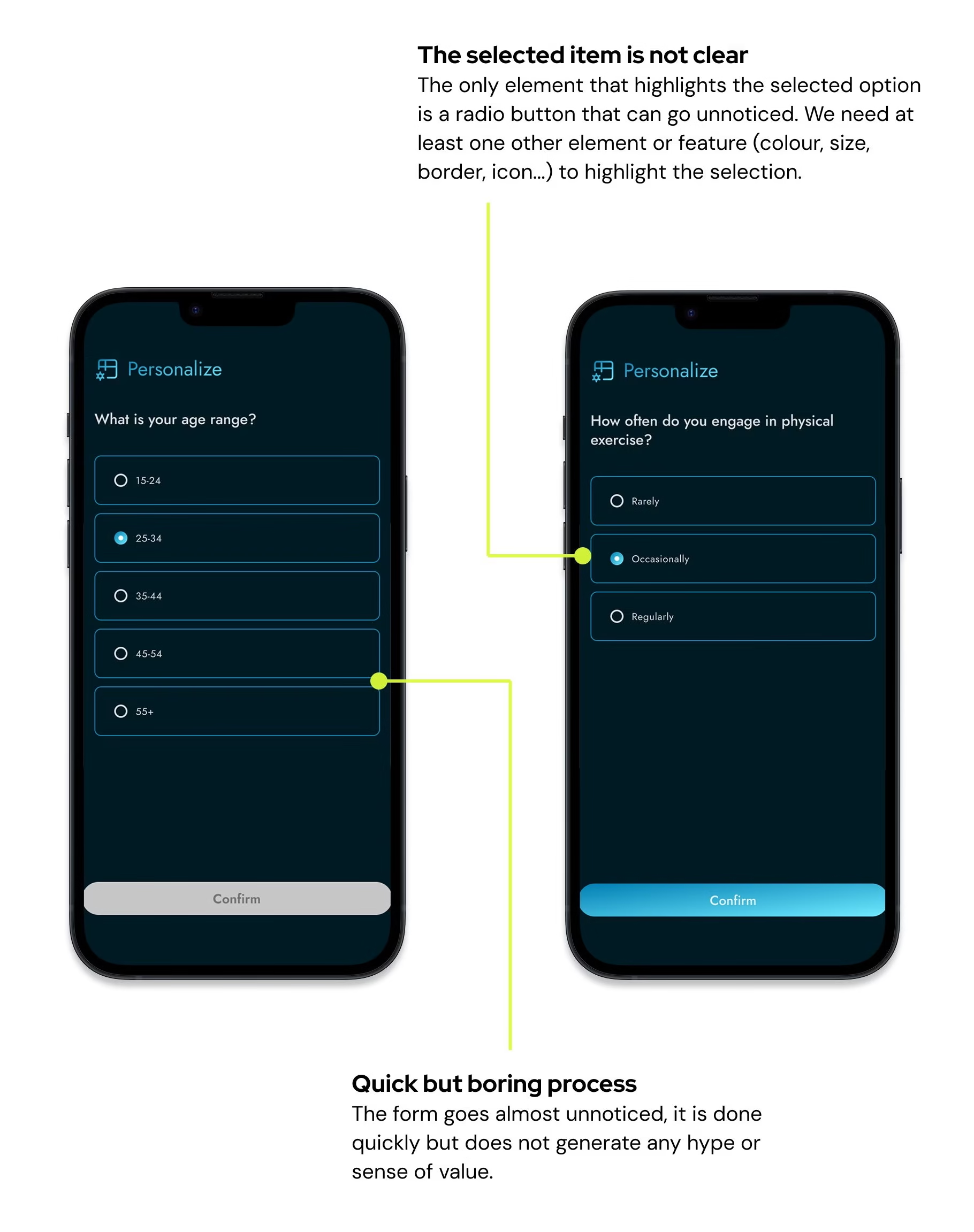
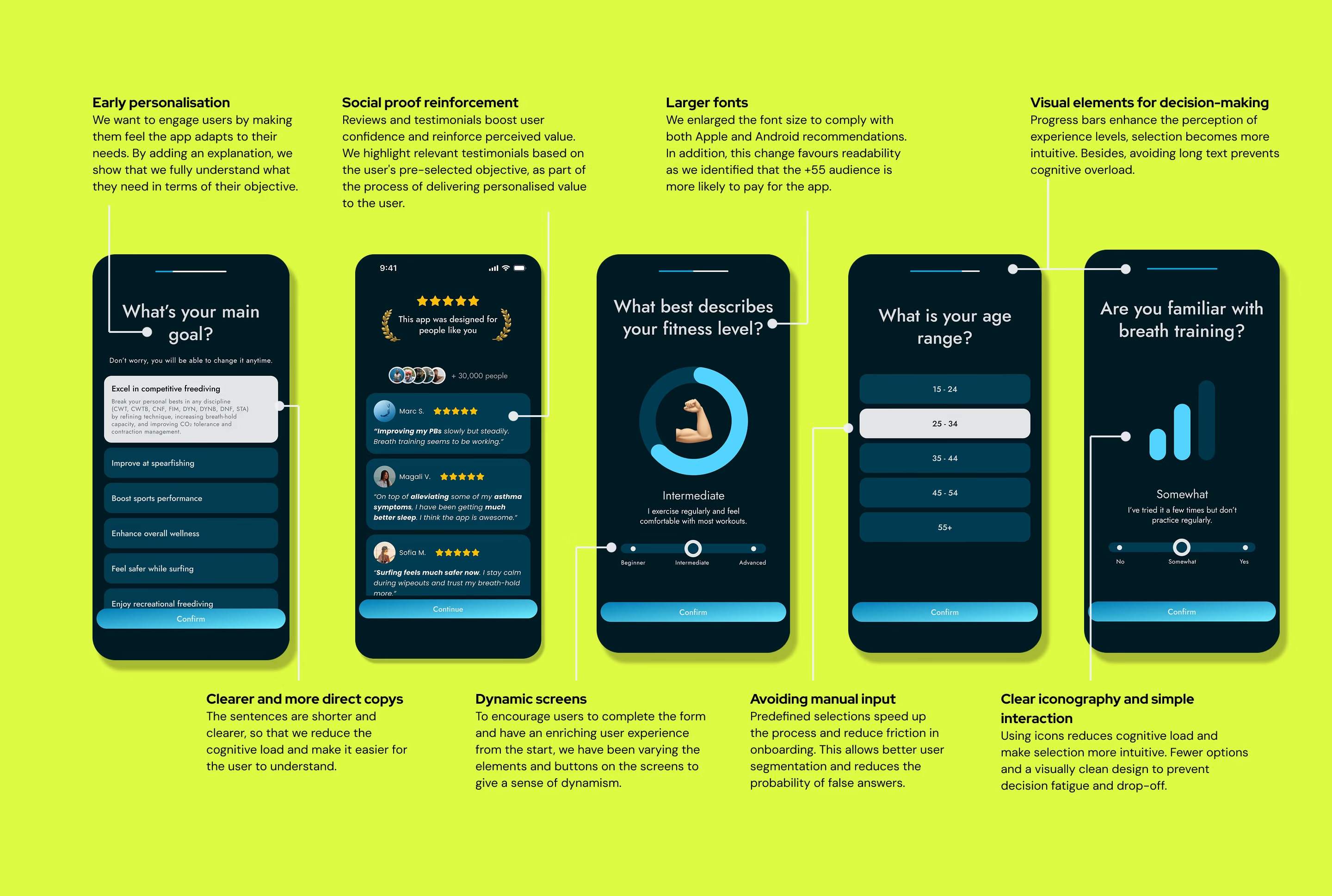
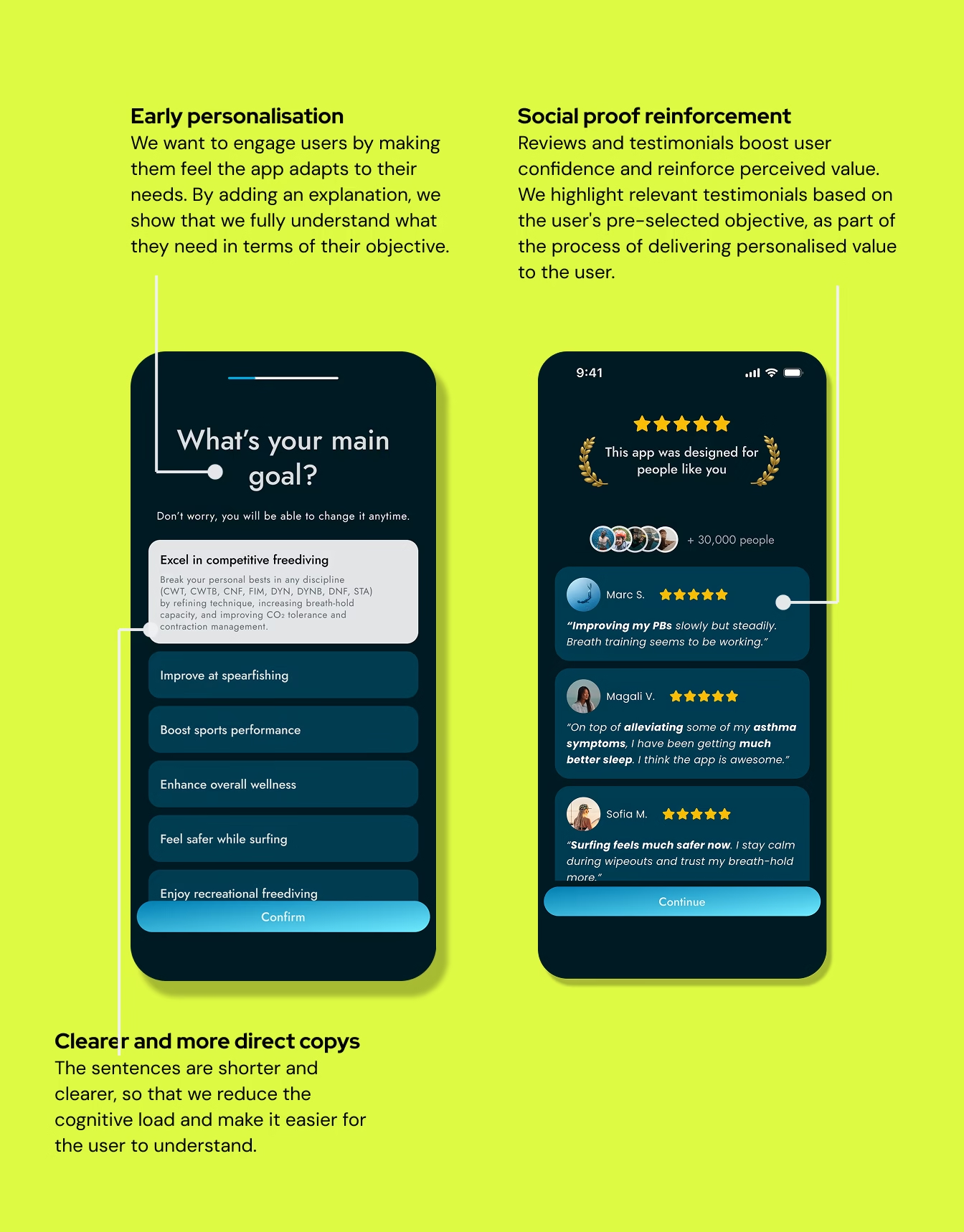
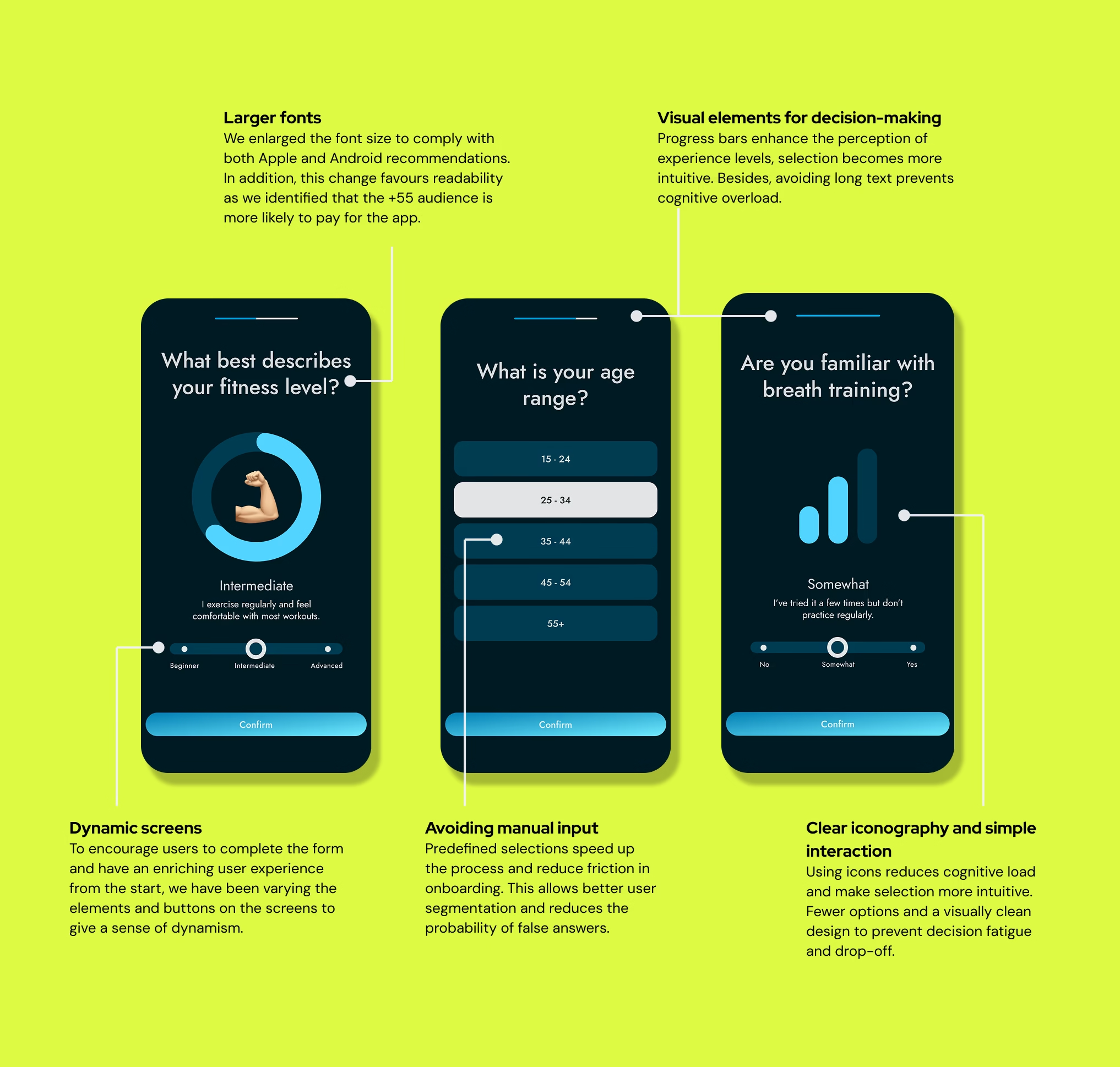

In this project I have learned a lot about emotional triggers, onboarding and paywalls. I really enjoyed it because of the type of project, related to the world of fitness and sport, as well as the psychological part.
In addition, I was able to use my previous experience in sales pages and persuasive texts to realise that they apply in a similar way to apps as they do to websites.
I am looking forward to continue learning about activation in this next stage.
Once this data is collected, the next phase will focus on activation improvements, ensuring that more users move from downloading the app to experiencing their first real training session—an essential step in driving long-term engagement and retention.

I redesigned the site to reduce cognitive overload, simplify booking paths, and make it mobile-friendly — resulting in +727% mobile engagement and +361% desktop interaction. Start scrolling for the story.